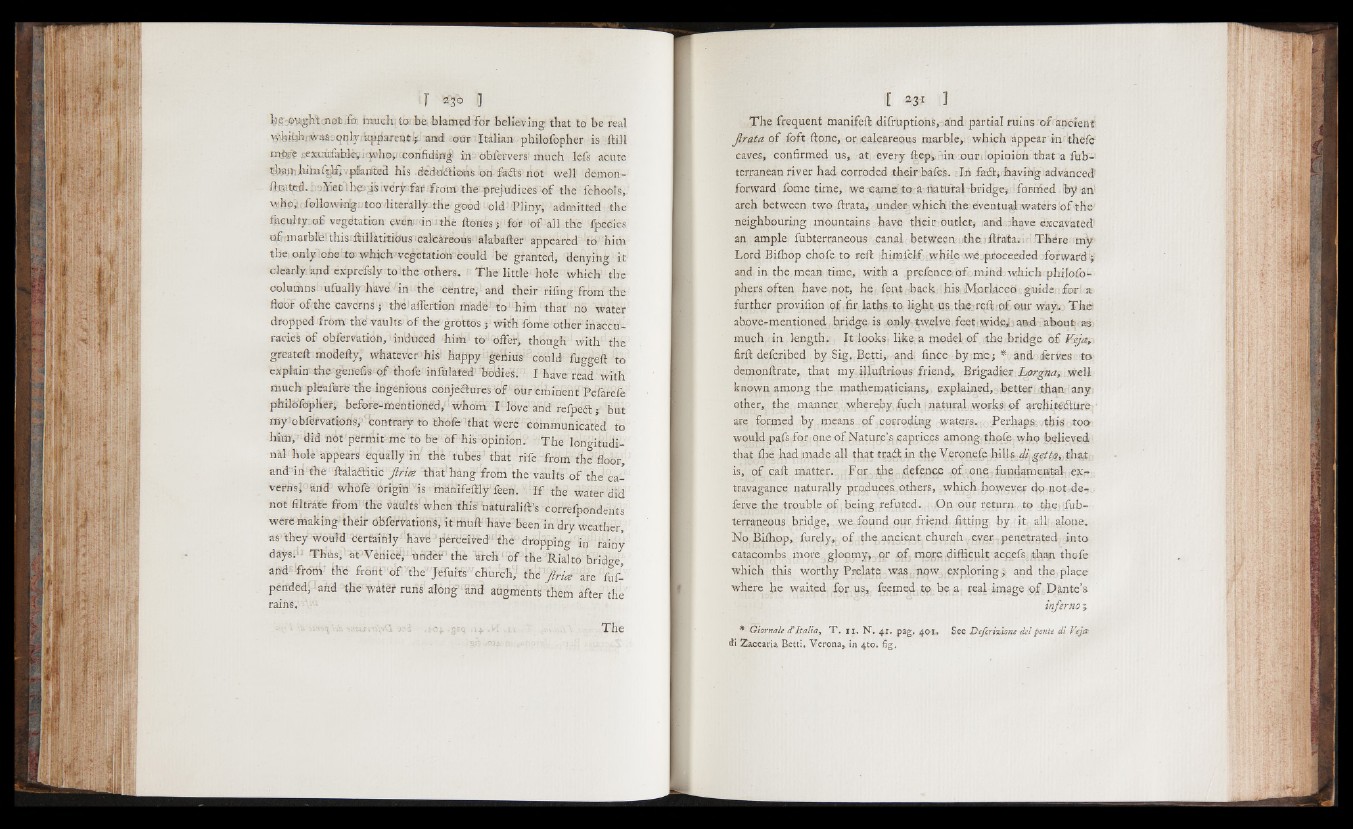
hgÿiyitgMsnsEifo much; to be, blamed for believing that to be real
^ifefcfMr»asqqtyAp^s»ti)t^-an)d <*mr -Italian philofopher is fkill
miiift E63Kiid&id^pig®h®{/ccorifxditï^ in* obfervers: much lefs acute
tteutihiljîfgkijvpiapftefl his dedriiftioii's on- fa®£ not well démont
e « ^ - hsMatihpfis¡vèr j&faif .ff ottf thé -prejudices-of the fchooîs.,.
whojcfoltoswn^i;too'4iterally.'tlig'good -old 'Pliny,' admitted the
lucidly o f vegetation even. in the ftones'j for o f all the fpccies
ohiinarblc’ tills:iti 1 iat ftio'us calcareous a ] a b a i 1 e r appeared to him
the, only iohe to which’vegetation could, be granted, denying it
clearly and exprefsly to the others. Thé little hole which the
columns ufually have in the centre, and their rifinÿfrom the
floor of-the caverns ; tbe'affertion made to him that rid water
dropped! from the vaults o f the grottos ; wit'h fome other inaccuracies
o f obfervation, induced him to offer] though with the
greateft modefty, whatever hi# happy genius could foggeft to
explain the geriefis o f thole infulated bodies. I have read with
much pleaiure the ingenious conjectures o f our eminent Pefarefe
philofopher, before-mentioned^ whom I love and refpeft ; but
rny'obfervarions/ contrary' to thofc that were communicated to
him, did ridt pértnit me to be' o f his opinion. The longitudinal
hole appears equally iff thè tubes' that rife from the floor,
and'fiffthe 'ftalafititicy^fo that hang“'frorii the vaults o f the'caverns]
(!ririd whôfé Origiri'is manifeftly feen. I f the water did
not filtrate from the vaults when this naturalift’s correfpondents
were making theif Obfcmtions, it rririft have been in dry weather,
as>they would certainly have -'perdeived' the dropping in rainy
daygdt tIMs^'-apTèitì^J“tìàaèF' thè ¥rch‘ o f the Rialto bridge,
arid -frOrii' the frêrif"Jf ^the'Jéfufts' church',1 the Jlrics arc fof-
pendcd, arid the water runs along and augments them after the
rains,
*£ ,Mi .ssq M ,.U The
The frequent manifeft difruptions, .arid partial ruins o f ancient
firata o f foft ftone, or calcareous marble, which appear in thefe
caves, confirmed us, at every ftep,.-in: ¡ounopinionthat a fob-
terranean river had corroded their,bates. zM fedfohavirilg ¡advanced?
forward fome time, we came to a riatural bridgec; formed by an
arch between two ftrata, , under, which ithe eventufdnwalers'of the
neighbouring mountains have theirsoutletj land thave excavated?
an ample fobterraneous canal between, athe 'itfaiaia • There: m-y
Lord Bifhop ehofe to reft himielf, wbilo'Wiejproceeded ¡forward'*
and in the mean time, with a prefonce' o f ,mind, which philofo-
phers often have not, he, font, b^ h :‘his Moriaccci.sguide ifor a
further provifion o f fir laths to light us the reft-ol our way. The
above-mentioned hridgeris only twelve feetwidejjanidr about? ass
much in length. It looks, like a model,,of the bridge o f Veja,
firft defcribed by Sig. Betti, and, finee by mej * and lerv’es to
demonftrate, that myfilfoftrio.us friend* Brigadier horgnay well
known among the mathematicians, explained, better than any
other, the manner whereby,inch natural workstpf architefiture ■
are formed by means o f corroding waters. Perhaps;-. this too
would pafs for one of Nature’s caprices among thole who bejieved
thatihe, had made all that trail in th? Veronfife-JtiUf ihajt
is, o f caft matter. - Fm .the - ¡defence o f one, fundamental extravagance
naturally produces others, which however do not de-
ferve the trouble p f being refuted. On our return to thejfob-
terraneous bridge, we found opr friend fitting by it a l l , alone.
No Biihop, forely*, o f the ancient church ever penetrated into
catacombs more gloomy*-,or .qf. m.cire difficult accefs. than thofe
which this worthy Prelate was, now exploring, and the place
where he waited for us, feemed to be ¡a, real image p f Dante’s
inferno j
* Giornale d'Italia, T . 1 1. N . 41. pag. 401. See Defcri%ume del fcanU di Veja
di Zaccaria Ectti. A7erona, in 4to. fig.